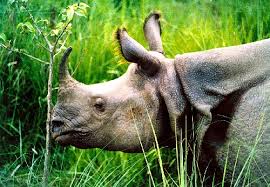
Lumbini is located in the south-central Terai of Nepal, situated in the foothills of the Himalayas. For millions of Buddhists the world over, it evokes a kind of holy sentiment akin to the significance of Jerusalem to Christians and Mecca to Muslims. Lumbini is the place where Lord Buddha - the apostle of peace, and the Light of Asia - was born in 623 B.C. In historical terms, the region is an exquisite treasure-trove of ancient ruins and antiquities, dating back to the pre-Christian era. The site (Lumbini Grove) was described as a beautiful garden in the Buddha's time and still retains its legendary charm and beauty. Both the Shakyas and Kolias Clans owned the garden and its tranquil environs at the time of Lord Buddha's birth. King Suddhodana, father of Buddha was of the Shakya Dynasty belonging to the Kshatriya or Warrior Caste.
For centuries, Buddhists the world over knew that the general area of Lumbini was where the Lord was born. In the words of those famous Chinese pilgrims of antiquity, Huian Tsang and Faeihan, 'Lumbini -where the Lord was born - is a piece of Heaven on Earth, where one could see the snowy mountains amidst a splendid garden, embedded with stupas and monasteries!' However, the exact location remained uncertain and obscure until 1 December 1886 when a wandering German archaeologist Dr. Alois A. Fuhrer came across a stone pillar and ascertained beyond doubt it was indeed the birthplace of Lord Buddha. Since that day it has become a focal point for hundreds of thousands of pilgrims.
Lumbini is the fourth largest tourist destination in Nepal. Nearly 20,000 tourists visit the area every year (Source: Nepal Tourism Board). Recently, UNESCO has declared it a World Heritage Site. It has great potential to grow as the major tourist destination in years to come.
The significance of Lumbini
Many of the places that were of importance to the Lord Buddha during his life retain a potent significance to Buddhists of today. Unsurprisingly, nowhere has a greater significance than the site of his birth. In the words of Buddha himself: "O-Bhikshus', after my death when people and members of a new generation come and ask you, then tell them that here the Buddha was born, here he attained the full enlightenment, here he turned the wheel of Dharma twelve times, and here finally the Buddha entered into Parinirvana". Hundreds of years have gone by, but the architectural splendours of that era are still standing and serve as a vivid reminder of the origins of Buddhist philosophy and doctrines. As a complement to the temples and shrines, our aim is to create a living environment in which Buddha would have felt at home during his life.





